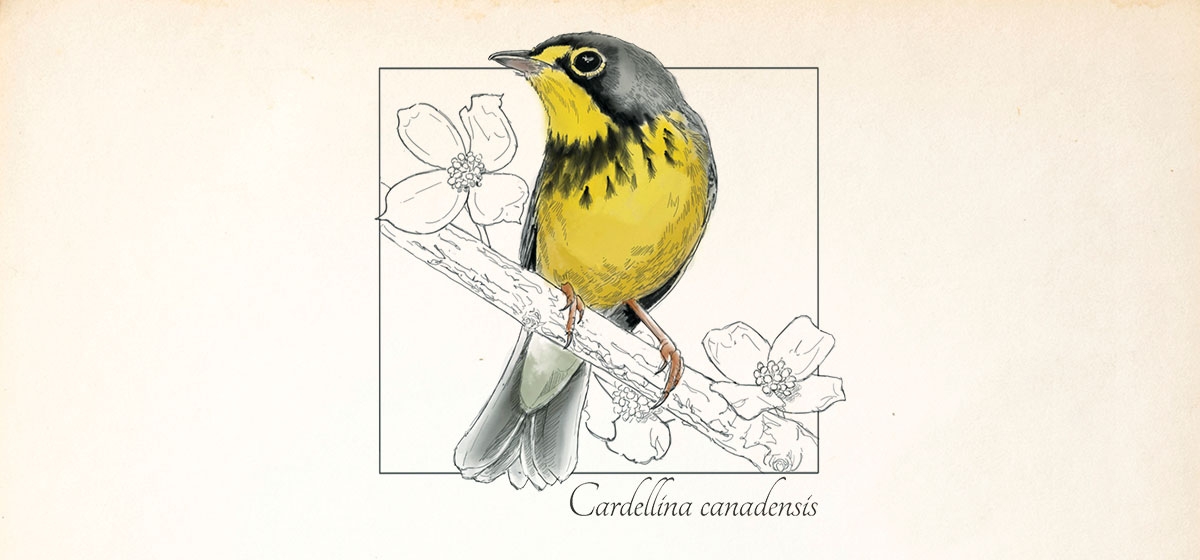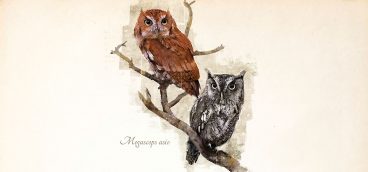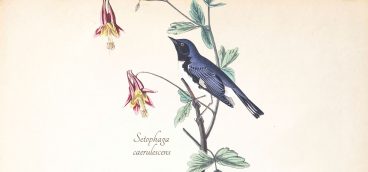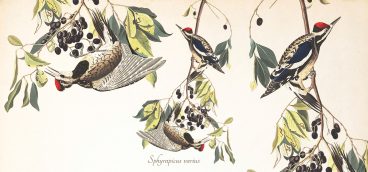
Imagine you’ve somehow found yourself
in Ecuador. You desperately want to get to Pittsburgh. You weigh a third of an ounce. You can fly. You’re a Canada Warbler.
Starting north on a spring night to avoid daytime predators and take advantage of cooler temperatures, you set out across the isthmus of Panama, over Costa Rica, Nicaragua, Honduras, Guatemala, and then along the Gulf Coast of Mexico. Those many miles take you only a few days. You’re a determined member of the avian migrant caravan, numbering in the millions, that passes quietly over our borders and comes to take advantage of American and Canadian abundance to find summer nesting territory and raise young. This is how it has always been for millennia. No passport needed.
The Canada Warbler is a small, neotropical migrant that appears in our region late in the spring. Indeed, most of the 1 million to 4 million members of this species find their way to Canada to breed, though typically some 20 percent fledge nestlings in a broad range from Minnesota through Pennsylvania and east to New York.
A male with its bright yellow face, chest and belly and gray back and wings made its way to Fox Chapel one spring some years ago. Attracted to the regular feathered hubbub around my feeders outside my second-story kitchen window, it stayed long enough for me to spot it with surprise and then delight in its classic black necklace field mark and white eye rings. Like most warblers, Canada Warblers feast on insects and spiders, so it wasn’t seeds or suet he was after. I believe he perched in my tree just because he was curious. Or maybe he was seeking his 15 minutes of bird-watching fame. Either way, he’s fixed in my memory.
Thinking of him reminds me of the beautiful 2003 Regent Square mural, “Bird’s Eye View,” by artist Kristin Williams. It depicts birds aloft over South Braddock Avenue and nearby Frick Park. Let’s say my Canada Warbler was in that mural and that he nested in the park, some 3,000 miles from where he started. It’s possible. His mate would build a woven nest of grasses and other woody materials on or near the ground in thick, obscuring cover. Two to six small, creamy eggs, each marked with brown speckles, would be brooded over for less than two weeks, then would hatch. Another week or two later nestlings would disperse and then join their cousins later in the summer in the reverse journey south. They’d come and go again for years in an ongoing chain migration that bothers no one.
This spring, get out to one of western Pennsylvania’s parks, refuges or conservation areas. We’re lucky for all that green space. It’s habitat for millions of adult birds that have flown north to enjoy plenty of food and warming temperatures and to cradle their offspring.





